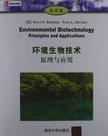环境生物技术
出版时间:2012-11 出版社:里特曼 (Bruce E. Rittmann)、 麦卡蒂 (Perry L. McCarty) 清华大学出版社 (2012-11出版) 作者:(美)里特曼(Bruce E.Rittmann),(美)麦卡 页数:754
内容概要
《大学环境教育丛书·环境生物技术:原理与应用(影印版)》介绍了用于保护和改善环境的微生物过程的基本原理及其实际应用。书中不仅涉及了环境生物技术的传统应用,如活性污泥法和厌氧消化,还介绍了新兴的应用,如有害化合物的脱毒、生物修复、饮用水的生物过滤等。书中提供了大量的图、表,每章后列有习题,以帮助理解和掌握基本概念和原理,还给出了丰富的实例,以利于读者正确地分析、设计和解决实际环境问题。 《大学环境教育丛书·环境生物技术:原理与应用(影印版)》适合作为高等院校环境类专业的教材,也可供环境、生物等领域的科技人员参考。
作者简介
作者:(美)里特曼、麦卡蒂
书籍目录
Chapter 1 BASICS OF MICROBIOLOGY 1.1 The Cell 1.2 Taxonomy andPhylogeny 1.3 Prokaryotes 1.3.1 Bacteria 1.3.2 Archaea 1.4 Eukarya 1.4.1 Fungi 1.4.2 Algae 1.4.3 Protozoa 1.4.4 Other Multicellular Microorganisms 1.5 Viruses 1.6 Infectious Disease 1.7 Biochemistry 1.8 Enzymes 1.8.1 EnzymeReactivity 1.8.2 Regulating the Activity of Enzymes 1.9 EnergyCapture 1.9.1 Electron and Energy Carriers 1.9.2 Energy and Electronlnvestments 1.10 Metabolism 1.10.1 Catabolism 1.10.2 Anabolism 1.10.3 Metabolism and Trophic Groups 1.11 Genetics andlnformation Flow 1.12 DeoxyribonucleicAcid (DNA) 1.12.1 TheChromosome 1.12.2 Plasmids 1.12.3 DNAReplication 1.13 RibonucleicAcid (RNA) 1.13.1 Transcription 1.13.2 Messenger RNA (mRNA) 1.13.3 Transfer RNA (tRNA) 1.13.4 Translation and the Ribosomal RNA(rRNA) 1.13.5 Translation 1.13.6 Regulation 1.14 Phylogeny 1.14.1 The Basics of Phylogenetic Classification 1.15 MicrobialEcology 1.15.1 Selection 1.15.2 Exchange of Materials 1.15.3 Adaptation 1.16 Tools to Study MicrobialEcology 1.16.1 Traditional Enrichment Tools 1.16.2 MolecularTools 1.16.3 MultispeciesModeling 1.17 Bibliography 1.18 Problems Chapter 2 STOICHIOMETRY AND BACTERIAL ENERGETICS 2.1 An Example Stoichiometric Equation 2.2 EmpiricalFormulas for Microbial Cells 2.3 Substrate Partitioning and Cellular Yield 2.4 Energy Reactions 2.5 OverallReactions for Biological Growth 2.5.1 Fermentation Reactions 2.6 Energetics and Bacterial Growth 2.6.1 Free Energy of the Energy Reaction 2.7 Yield Coefficient and Reaction Energetics 2.8 Oxidized Nitrogen Sources 2.9 Bibliography 2.10 Problems Chapter 3 MICROBIAL KINETICS 3.1 BasicRateExpressions 3.2 ParameterValues 3.3 Basic Mass Balances 3.4 Mass Balances on Inert Biomass and Volatile Solids 3.5 SolubleMicrobiaIProducts 3.6 NutrientsandElectronAcceptors 3.7 InputActiveBiomass ' 3.8 Hydrolysis ofParticulate and Polymeric Substrates 3.9 Inhibition 3.10 OtherAlternateRate Expressions 3.11 Bibliography 3.12 Problems Chapter 4 BIOFILM KINETICS 4.1 MicrobialAggregation 4.2 Why Biofilms? 4.3 Theldealized Biofilm 4.3.1 SubstratePhenomena 4.3.2 TheBiofilmltself 4.4 TheSteady-StateBiofilm 4.5 TheSteady-State-Biofilm Solution 4.6 EstimatingParameterValues 4.7 AverageBiofilm SRT 4.8 CompletelyMixedBiofilmReactor 4.9 Soluble Microbial Products and Inert Biomass 4.10 Trendsin CMBRPerformance 4.11 NormalizedSurfaceLoading 4.12 Nonsteady-StateBiofilms 4.13 Special-CaseBiofilm Solutions 4.13.1 DeepBiofilms 4.13.2 Zero-OrderKinetics 4.14 Bibliography 4.15 Problems Chapter 5 REACTORS 5.1 ReactorTypes 5.1.1 Suspended-GrowthReactors 5.1.2 BiofilmReactors 5.1.3 ReactorArrangements 5.2 Mass Balances 5.3 A Batch Reactor 5.4 A Continuous-Flow Stirred-Tank Reactor with Effluent Recycle 5.5 APlug-FlowReactor 5.6 A Plug-Flow Reactor with Effluent Recycle 5.7 Reactors with Recycle of Settled Cells 5.7.1 CSrIR with Settling and Cell Recycling 5.7.2 EvaluationofAssumptions 5.7.3 Plug-Flow Reactor with Settling and Cell Recycle 5.8 UsingAlternateRateModels 5.9 Linking Stoichiometric Equations to Mass Balance Equations 5.10 Engineering Design ofReactors 5.11 Reactorsin Series 5.12 Bibliography 5.13 Problems …… Chapter 6 THE ACTIVATED SLUDGE PROCESS Chapter 7 LAGOONS Chapter 8 AEROBIC BIOFILM PROCESSES Chapter 9 NITRIFICATION Chaptor 10 DENITRIFICATION Chapter 11 PHOSPHORUS REMOVAL Chapter 12 DRINKING-WATER TREATMENT Chapter 13 ANAEROBIC TREATMENT BY METHANOGENESIS Chapter 14 DETOXIFICATION OF HAZARDOUS CHEMICALS Chapter 15 BIOREMEDIATION Appondlx A FREE ENERGIES OF FORMATION FOR VARIOUS CHEMICAL SPECIES,25° Appondlx B NORMALIZED SURFACE-LOADING CURVE
章节摘录
版权页: 插图: Air sparging alters at least three aspects of fluidized bed operation. First, the presence of the gas phase reduces the liquid hold-up (8), which decreases the liquid detention time and increases the water's interstitial velocity. Second, these effects of the gas phase modify how the solid carriers are expanded in response to the upward water flow. Although the response is complicated, bed aeration generally causes a decrease in the FBE for the same Q/Acs. Chang and Rittmann (1994) and Yu and Rittman (1997) discuss these interacting factors. Third, the input of the energy from aeration increases the bed turbulence, which can result in a significant increase in the biofilm detachment rate. Since aerobic heterotrophic systems have high biomass yields and growth potential (i.e., Smin iS very low), the added detachment rate is not necessarily an impediment in terms of BOD removal and process stability, although effluent suspended solids may be increased. Fluidized beds offer reduced volumes, due to their high specific surface area. Liquid detention times can be as low as a few minutes. The size advantage of flu- idized beds generally is limited by the ability to transfer oxygen to the water and the biofilm. Thus, surface loads for fluidized beds may be somewhat lower than for the other biofilm systems. As a consequence, volumetric loads probably cannot be increased in direct proportion to the increase in specific surface area. However, the short liquid detention times of fluidized beds are particularly advantageous for aerobic treatment of low concentrations of contaminants, for which the oxygen demand is relatively low. One operating problem that arises in some situations is bed stratification, which usually arises when the carrier particles are not sufficiently uniform in size. The smaller particles accumulate near the top and also experience a lower biofilm-detachment rate. Over time, these smaller particles accumulate more biofilm than do the larger particles, making them less dense, which increases their degree of fluidization. The problem is that the continued expansion of the stratified bed leads ultimately to entrainment of the carrier particle's in the effluent and recycle flows.Using a highly uniform medium most effectively prevents bed stratification. Other control measures include designing a conical section at the top of the reactor to allow light particles to settle; installing a mechanical shear device, such as a propeller mixer, to detach the excess biofilm from the small particles; or withdrawing carriers from the top of the bed for cleaning.
编辑推荐
《环境生物技术:原理与应用(影印版)》适合作为高等院校环境类专业的教材,也可供环境、生物等领域的科技人员参考。
图书封面
评论、评分、阅读与下载
用户评论 (总计2条)
- 全英文的,亮瞎我了。以为是中文的才买。全英的只有慢慢看。
- 非常不错的书,实用啊
